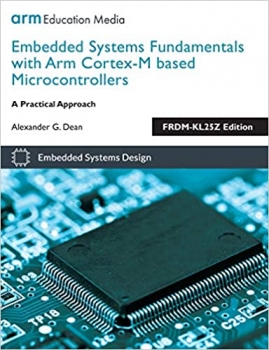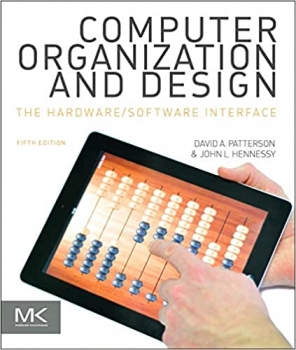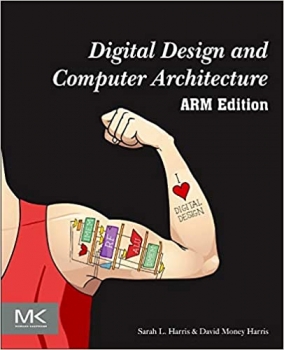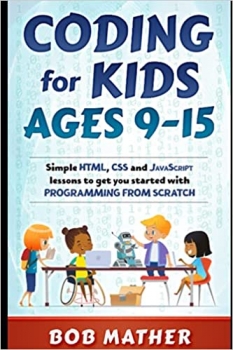Product details
- Publisher : ARM Education Media UK (March 28, 2017)
- Language : English
- Paperback : 316 pages
- ISBN-10 : 1911531034
- ISBN-13 : 978-1911531036
جلد سخت سیاه و سفید_کتاب Embedded Systems Fundamentals with ARM Cortex-M based Microcontrollers: A Practical Approach FRDM-KL25Z Edition
Microcontrollers are embedded into larger systems to provide benefits such as better performance, more features, better efficiency, lower costs and better dependability. This textbook introduces students to creating microcontroller-based embedded systems featuring an ARM Cortex-M CPU core.
Chapter 1 introduces students to the concepts of MCU-based embedded systems, and how they differ from general-purpose computers. It then introduces the ARM Cortex-M0+ CPU, the Kinetis KL25Z MCU, and the low cost FRDM-KL25Z MCU development board.
Chapter 2 presents the general purpose I/O peripheral to provide an early, hands-on experience with reading switches and lighting LEDs using C code. It also introduces the CMSIS hardware abstraction layer, which simplifies software access to peripherals.
Chapter 3 introduces multitasking on the CPU, with the goals of improving responsiveness and software modularity while reducing CPU overhead. The interplay of interrupts, peripherals and schedulers (both cooperative and preemptive) is examined.
Chapter 4 presents the ARM Cortex-M0+ processor core, including organization, registers, memory, and instruction set. It then discusses interrupts and exceptions, including CPU response and hardware configuration. Designing software for a system with interrupts is discussed, including program design (including partitioning work), interrupt configuration, writing handlers in C, and sharing data safely given preemption.
Chapter 5 first gives an overview of tool-chain which translates a program from C source code to executable object code. It then shows side-by-side the source code and the object code the tool-chain has generated to implement it. Topics covered include functions, arguments, return values, activation records, exception handlers, control flow constructs for loops and selection, memory allocation and use, and accessing data in memory.
Chapter 6 presents analog interfacing, starting with theory and ending with practical implementations. Quantization and sampling are presented as a foundation for digital to analog conversion, and analog to digital conversion. The DAC, ADC and analog comparator peripherals are presented and used.
Chapter 7 presents timer peripherals and their use for generating a periodic interrupt or a pulse-width modulated signal, or for measuring elapsed time or a signal’s frequency. Watchdog timers, used to detect and reset an out-of-control program, are also discussed. The SysTick, PIT, TPM and COP timers are examined.
Chapter 8 discusses serial communications, starting with the fundamentals of data serialization, framing, error detection, media access control and addressing. Software queues are introduced to show how to buffer data between communication ISRs and other parts of the program. Three protocols and their supporting peripherals are investigated next: SPI, asynchronous serial (UART) and I2C. UART communication is demonstrated using the FRDM-KL25Z’s debug MCU as a serial port bridge over USB to the PC. I2C communication is demonstrated using the FRDM-KL25Z’s built-in 3 axis accelerometer with I2C interface.
Chapter 9 introduces the direct memory access peripheral and its ability to transfer data autonomously, offloading work from the CPU and offering dramatically improved performance. Examples include using DMA for bulk data copying, and for DAC-based analog waveform generation with precise timing.
An appendix covers how to measure the power and energy use on the FRDM-KL25Z board, including disconnecting the debug MCU to reduce power. Energy measurement using an ultracapacitor is also presented.
For use in ECE, EE, and CS departments.
منابع کتاب جلد سخت سیاه و سفید_کتاب Embedded Systems Fundamentals with ARM Cortex-M based Microcontrollers: A Practical Approach FRDM-KL25Z Edition
میکروکنترلرها در سیستمهای بزرگتر تعبیه شدهاند تا مزایایی مانند عملکرد بهتر، ویژگیهای بیشتر، راندمان بهتر، هزینههای کمتر و قابلیت اطمینان بهتر را ارائه دهند. این کتاب درسی دانش آموزان را با ایجاد سیستم های تعبیه شده مبتنی بر میکروکنترلر با هسته CPU ARM Cortex-M آشنا می کند.
فصل 1 دانش آموزان را با مفاهیم سیستم های تعبیه شده مبتنی بر MCU و تفاوت آنها با کامپیوترهای همه منظوره آشنا می کند. سپس CPU ARM Cortex-M0+، Kinetis KL25Z MCU و برد توسعه ارزان قیمت FRDM-KL25Z MCU را معرفی می کند.
فصل 2 هدف کلی ورودی/خروجی جانبی را ارائه میکند تا تجربهای زودهنگام و عملی با خواندن سوئیچها و روشنایی LED با استفاده از کد C ارائه کند. همچنین لایه انتزاعی سخت افزاری CMSIS را معرفی می کند که دسترسی نرم افزار به وسایل جانبی را ساده می کند.
فصل 3 چندوظیفه ای را در CPU معرفی می کند، با هدف بهبود پاسخگویی و ماژولار بودن نرم افزار و در عین حال کاهش سربار CPU. فعل و انفعال وقفه ها، لوازم جانبی و زمانبندی (هم مشارکتی و هم پیشگیرانه) مورد بررسی قرار می گیرد.
فصل 4 هسته پردازنده ARM Cortex-M0+ را شامل سازماندهی، رجیسترها، حافظه و مجموعه دستورالعمل ها ارائه می کند. سپس وقفه ها و استثناها، از جمله پاسخ CPU و پیکربندی سخت افزار را مورد بحث قرار می دهد. طراحی نرم افزار برای یک سیستم با وقفه مورد بحث قرار می گیرد، از جمله طراحی برنامه (شامل کار پارتیشن بندی)، پیکربندی وقفه، نوشتن کنترل کننده ها در C، و به اشتراک گذاری داده ها به صورت ایمن با توجه به پیش گرفتن.
فصل 5 ابتدا یک نمای کلی از زنجیره ابزار ارائه می دهد که یک برنامه را از کد منبع C به کد شی اجرایی ترجمه می کند. سپس کد منبع و کد شیئی را که زنجیره ابزار برای پیاده سازی آن ایجاد کرده است، در کنار هم نشان می دهد. موضوعات تحت پوشش عبارتند از توابع، آرگومان ها، مقادیر بازگشتی، سوابق فعال سازی، کنترل کننده های استثنا، ساختارهای جریان کنترل برای حلقه ها و انتخاب، تخصیص و استفاده از حافظه و دسترسی به داده ها در حافظه.
فصل 6 رابط آنالوگ را ارائه میکند که با تئوری شروع میشود و با اجرای عملی پایان مییابد. کوانتیزاسیون و نمونه برداری به عنوان پایه ای برای تبدیل دیجیتال به آنالوگ و تبدیل آنالوگ به دیجیتال ارائه شده است. DAC، ADC و لوازم جانبی مقایسه کننده آنالوگ ارائه و استفاده می شود.
فصل 7 لوازم جانبی تایمر و استفاده از آنها برای تولید یک وقفه دوره ای یا سیگنال مدوله شده با عرض پالس یا برای اندازه گیری زمان سپری شده یا فرکانس سیگنال را ارائه می دهد. تایمرهای Watchdog که برای شناسایی و تنظیم مجدد یک برنامه خارج از کنترل استفاده می شوند نیز مورد بحث قرار می گیرند. تایمرهای SysTick، PIT، TPM و COP مورد بررسی قرار می گیرند.
فصل 8 ارتباطات سریال را مورد بحث قرار می دهد که با اصول سریال سازی داده ها، کادربندی، تشخیص خطا، کنترل دسترسی رسانه ها و آدرس دهی شروع می شود. صف های نرم افزاری برای نشان دادن نحوه بافر داده ها بین ISR های ارتباطی و سایر بخش های برنامه معرفی شده اند. سه پروتکل و تجهیزات جانبی پشتیبانی کننده آنها در ادامه بررسی می شوند: SPI، سریال ناهمزمان (UART) و I 2 C. ارتباط UART با استفاده از MCU اشکال زدایی FRDM-KL25Z به عنوان پل پورت سریال روی USB به رایانه نشان داده می شود. ارتباط I 2 C با استفاده از شتاب سنج 3 محوره داخلی FRDM-KL25Z با رابط I 2 C نشان داده می شود.
فصل 9 ابزار جانبی دسترسی مستقیم به حافظه و توانایی آن برای انتقال داده ها به صورت مستقل، تخلیه کار از CPU و ارائه عملکرد بهبود چشمگیر را معرفی می کند. به عنوان مثال می توان به استفاده از DMA برای کپی انبوه داده ها و برای تولید شکل موج آنالوگ مبتنی بر DAC با زمان بندی دقیق اشاره کرد.
یک ضمیمه نحوه اندازهگیری مصرف برق و انرژی را در برد FRDM-KL25Z، از جمله قطع کردن دیباگ MCU برای کاهش قدرت، پوشش میدهد. اندازه گیری انرژی با استفاده از یک فوق خازن نیز ارائه شده است.
برای استفاده در بخش های ECE، EE و CS































ارسال نظر درباره جلد سخت سیاه و سفید_کتاب Embedded Systems Fundamentals with ARM Cortex-M based Microcontrollers: A Practical Approach FRDM-KL25Z Edition